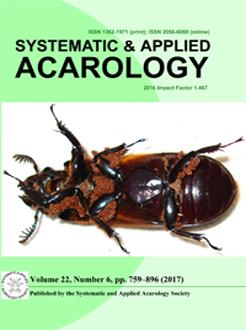Among the nine research journals dedicated exclusively to acarology, one is restricted to ticks (Ticks and Tick-borne Diseases) and four are regional journals started in Japan, Russia, Iran and Egypt, respectively (Zhang 2014a). The other four international journals are all broad in scope and listed by Journal Citation Reports: Acarologia (started in 1959) currently publishes 4 issues per year, International Journal of Acarology (IJA, started in 1975) currently publishes 8 issues per year, Experimental and Applied Acarology (EAA, started in 1985) currently publishes 12 issues per year, and Systematic and Applied Acarology (SAA, started in 1996) currently publishes 12 issues per year. SAA increased its frequency from four issues per year in 2014 to 12 per year in 2016, whereas the three other journals did not change frequency. As a result, SAA increased the number of papers per year each year over the last three years and is now the largest, despite being a latecomer (Fig. 1). The volume of SAA had been gradually increasing in the past (Zhang 2014b, 2015, 2016), but the rapid increase during the last three years is a reflection of the rising popularity and respect of this journal among acarologists in the world.
FIGURE 1.
Trends of the number of papers published in four main acarological journals during the last three years. Data from Web of Science Core Collection (June 2017).

Despite the increase in the number of papers, SAA maintained a high standard with increasing impacts, as indicated by the steady increase of its impact factors (Fig. 2). We thank our authors for their support, Jianfeng Liu for journal production in the last year and half, Xiaofeng Xue for maintaining the accounts, and Xiaoyue Hong (and students) for distribution of print issues. We also greatly appreciate the contributions of our editors and reviewers to the quality of the work that we publish in SAA.






